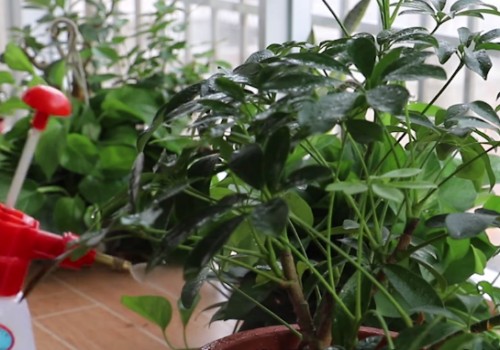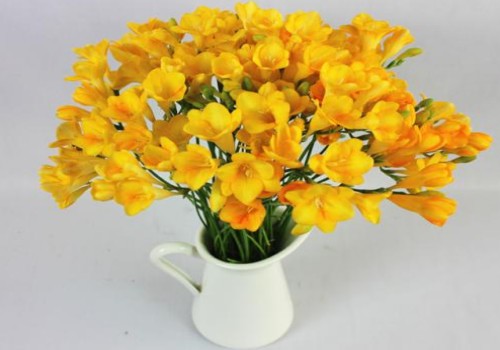What if the leaves of duck foot wood are sparse, yellow and grow slowly?
Duck foot wood is a kind of plant whose branches and leaves are evergreen all the year round, not only with strange leaf shape and green leaf color, but also with beautiful plant shape, so it is a very beautiful ornamental plant. Not only that, its leaves can also absorb nicotine and other harmful gases produced by smoking, which is undoubtedly a blessing for friends who like to smoke at home.

And more importantly, even after the leaves turn yellow and fall off, the ornamental value of this ornamental evergreen will not disappear. Therefore, both home users and office workers tend to prefer to raise a duck foot potted plant in the living and working environment.
However, there are also friends who think that duck feet are not easy to raise, and it is easier to see that its leaves are sparse, yellow easily, and grow slowly. In fact, as long as we can maintain according to the growth habits of duck foot wood, it is generally very easy to raise it well. So, what about the sparse leaves, yellowing and slow growth of duck foot wood? We usually need to do a good job in the following four areas:
First, basin soil
Duck foot wood, like most flowers and plants, prefers a slightly acidic soil environment that is fertile and loose, permeable and permeable. The original usually recommends that people use rotten leaf soil or peat soil, garden soil, and then mix about 25% of the river sand to form a mixed soil. At the same time, in order to ensure that there is enough fertility in the basin soil, we can also add a little cake fertilizer as base fertilizer.
Second, light
Duck foot wood likes the growth environment of semi-shade, so bad friends think that it is very shade-resistant and keep it in a lack of light for a long time. In fact, duck foot wood not only likes semi-shade, but also likes light, as long as the light intensity is not strong, not exposed to the hot sun, it can usually provide all-day direct light.
And semi-overcast does not mean that there is no light, generally put the potted plants in a bright and sufficient scattered light environment for maintenance. In such a light environment, it is often more favorable for duck foot wood to sprout lateral buds and pull out lateral branches, thus growing more luxuriantly and verdant leaves.
Third, humidity
Duck foot wood prefers the moist growth environment, which requires not only high air relative humidity, but also sufficient water in the basin soil. In this kind of air humidity and basin soil humidity is relatively high, duck foot wood tends to grow better. Therefore, in the daily maintenance and management process, we should replenish water in time to maintain environmental humidity.
Although duck foot wood likes to be wet, it is not resistant to water, or its water resistance is relatively poor. And watering is generally difficult to control the amount of water, so it is generally recommended to spray more water and less watering in the usual maintenance and management process. Because if the basin soil is too wet for a long time, it will often cause a large number of fallen leaves.
IV. Fertilizer
In terms of the whole growing season, the demand for fertilizer is not too great, but when the growth is very exuberant in summer, it also has a large demand for nutrients, so it also likes to be fat. Therefore, generally in the summer growth season, it is suggested that topdressing should be carried out once a week to better meet its growth needs. It can also prevent the leaves from sparse, yellowing and shedding.
If the duck foot wood we raise belongs to the species of variegated leaves, then we must strictly control and reduce the use of nitrogen fertilizer. Because if the nitrogen intake is too much, it is easy to make the plaque color lighter, or even disappear, thus reducing the ornamental nature of the potted plant.
As long as we can manage in accordance with the above four aspects of conservation advice, we can not only avoid the situation of sparse leaves, yellowing, slow growth, but also let it grow branches and leaves, and quickly make the potted plants grow luxuriantly and verdant.
Time: 2019-05-27 Click:
- Prev

How to remedy the rotten roots of duck feet
There is a kind of plant, which is famous for its leaves shaped like pressing feet. This plant is called duck foot wood. Not only that, this plant also keeps green all the year round, and if it is planted in a pot, it can not only decorate and beautify the home environment, but also purify the indoor air and bring people a fresh feeling. So
- Next

Can Xiangxue orchid be hydroponically cultivated?
Garlic is a common ingredient in our life, but in the eyes of many potted plant lovers, it is a kind of potted material. Therefore, garlic as a family potted plant on the balcony, can be watched, but also can be used for cooking, nutrition is also very rich, so it is very practical. But
Related
- Fuxing push coffee new agricultural production and marketing class: lack of small-scale processing plants
- Jujube rice field leisure farm deep ploughing Yilan for five years to create a space for organic food and play
- Nongyu Farm-A trial of organic papaya for brave women with advanced technology
- Four points for attention in the prevention and control of diseases and insect pests of edible fungi
- How to add nutrient solution to Edible Fungi
- Is there any good way to control edible fungus mites?
- Open Inoculation Technology of Edible Fungi
- Is there any clever way to use fertilizer for edible fungus in winter?
- What agents are used to kill the pathogens of edible fungi in the mushroom shed?
- Rapid drying of Edible Fungi

